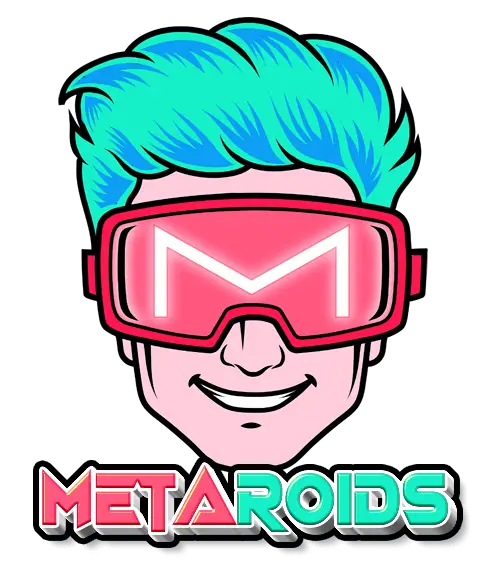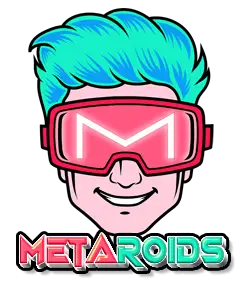It’s never fun to watch your creation being used without your permission. Least of all if the culprit is reaping six figures on the back of your efforts and creativity. But there have been multiple cases of stolen art being peddled on NFT marketplaces and other online platforms, and to this day, this practice is still ongoing.
Fortunately, even in the wild wild west of web3, there are multiple entities that seek to give justice to artists and are willing to fight the good fight. The largest online artist community (DeviantArt) is also tracking nine blockchains, including Ethereum, Polygon, Klaytn, etc. in its commitment to combat NFT copyright violators.
However, it’s important for artists to also take steps to safeguard their work. In this guide, we will discuss what you can do if your art gets stolen and sold as an NFT, and provide some tips on how to prevent this from happening in the first place.
Can You Sue Someone for NFT Theft?
This begs the question, what legal leverage do artists have over their creations?
According to copyright law, only the creator or copyright holder has the legal right to reproduce, sell, create derivatives, or distribute their artwork. Therefore, if you find any of your works being sold on marketplaces as an NFT, you have the right to sue the seller.
There have been multiple recorded cases of artists who have successfully found justice after legally pursuing violators. Miramax sued Quentin Tarantino for issuing NFTs based on the hit classic film, Pulp Fiction, which the studio owned the rights to. Thankfully, the case was settled and never went to trial. Non-NFT artist RJ Palmer was able to report an instance of his work being listed on a marketplace, as well as notify other artists whose creations were also stolen.
If you are an artist whose work has been stolen and sold as an NFT, you may be considering taking legal action against the infringer. However, it is important to understand that pursuing legal action for copyright infringement via NFTs can be a complicated and uncertain process.
We wrote an article discussing how copyright law applies to NFTs in detail here.
Why Pursuing NFT Infringers Legally Is Hard (Today)
Running after NFT violators is hard today, least of all if you plan to take them to court. Over time, this will change. For now, it’s important that you understand the pain points of NFT art theft.
NFT Regulation is Premature
The main challenge in suing someone for art theft in the space is that the technology and laws surrounding NFTs are still relatively new and untested. There may not be a clear legal precedent for handling such cases, and it can be difficult to predict how a court will rule. Not to mention laws vary depending on your country of residence.
Anonymity is Prevalent in Web3
Another problem is that many people who operate in the web3 space use anonymous identities, making it difficult to locate and identify the real-world identities of the person who stole your art. If you don’t know who stole from you, it’s challenging to serve them with a lawsuit.
The Legal Cost May Not Be Worth It
Even if you are able to locate and sue the violator, the cost of legal action may not be worth the effort. It can be expensive to hire an attorney (especially one with knowledge of NFTs) and to go through legal proceedings. Furthermore, it is not guaranteed that you will be able to fully recover damages or other compensation.
Given these challenges, it’s crucial for creators who have had their art stolen to assess whether it is worth pursuing legal action or whether it would be more effective to take measures focused on deterrence instead.
This might include deplatforming the thief from the marketplace they are using via a DMCA takedown. You may also send a cease and desist letter stating that you will take them to court if they continue to use your work without consent.
What to Do if Your Artwork Gets Stolen as an NFT?
If you discover that one or more of your pieces have been used or monetized without your consent, you need to take action immediately. Here are the steps you need to do:
Identify the Thief and Your Stolen Art
The first thing you need to secure is proof that your work has indeed been stolen. For that, you need the URL of the NFT listing or post that showcases your art. Create multiple screenshots as a backup.
While it is unlikely that infringers would share their identities online, it’s at least worth a try. If you could link the violator with a real person, your case would immediately hold more weight. Chances are that you’ll have to make do with their online persona, but it’s okay.
Regardless, you need to stalk all their social media and NFT marketplace accounts and see if any of them can provide clues that would give them away. If possible, join forces with other artists whose works have also been stolen by the same scammer. You’d be surprised how much you can uncover.
Submit a DMCA Takedown
Before taking any legal action, it’s better to initiate a DMCA takedown request on your stolen art first in order to prevent people from unintentionally buying the fakes. Luckily, almost all NFT marketplaces (or other websites) have a reporting system that enables the flagging of copyrighted content.
You can easily find these on the website that has your stolen NFT art. To save you the trouble, we compiled a list of NFT IP takedown request forms for various platforms:
If any of the above links don’t work, please let us know immediately. In the meantime, simply google “[marketplace name] dmca” or “[marketplace name] how to report copyright infringement”.
Some marketplaces don’t have ready DMCA forms, but all of them are legally bound to answer a DMCA request, provided that you have the information and proof. If this is your case, you will need to submit a written notice that includes the following:
- Your full name and electronic or physical signature. Avoid using your pseudonym if possible.
- A description of the copyrighted work that has been infringed, including its webpage URL where you published it.
- Your address, telephone number, and email address (social media accounts are a bonus).
- A statement by you that states that you, acting in good faith, know that the disputed use of the artwork is not authorized by the copyright owner, its agent, or the law.
- A statement by you, made under penalty of perjury, that the above information in your notice is accurate and that you are the copyright owner or authorized to act on the copyright owner’s behalf.
Then send it via email to the platform that contains your infringed work. Here are more emails we compiled to save you time:
- Exchange.Art: info@exchange.art
- JPG Store: team@jpg.store
- SuperRare: ip@superrare.com; legal@superrare.com
- Nifty Gateway: intellectualproperty@niftygateway.com
Now that we’ve at least contained the damage, you may decide if it’s worth your time to take the culprit to court.
Take Legal Action (if necessary)
Before doing anything, there are a few details you need to know.
First, you need to assess whether taking legal action is actually worth the cost and hassle. If by any chance your art was registered under copyright law prior to the infringement, then by all means you should press charges. In fact, you will most likely enjoy free lawyer’s fees and litigation costs.
Artists whose stolen work is copyright registered are entitled to receive remedy for statutory damages of up to $150K per violation (varies per country).
However, if your artwork wasn’t registered prior, you’re still copyright protected but the burden of proof will be imposed on you. Furthermore, your monetary compensation (assuming you’ll win) will be limited to the infringer’s profit. For instance, if they only made $300 off your work, then that’s likely what you’ll get minus gas fees and other costs.
If you still want to pursue the infringer in court after knowing all these, then by all means you should get an attorney.
How to Protect Yourself from NFT Art Theft
When it comes to protecting your original creations, the concept of “prevention is better than cure” is especially relevant. Taking proactive steps to decrease the odds of having your art stolen as NFT in the first place can save you a lot of time, effort, and stress in the long run.
Ask Your Fans for Help
As a creator, your fans are the greatest resource at your disposal. You can leverage them to help report all your stolen works. We recommend having a pinned message on your social media profile or bio that properly articulates how they can help you. It’s important that you publicize all your accounts across platforms and marketplaces so they know which ones represent the real you.
Register the Copyright for Your Works
The most robust form of protection is copyright registration if you can handle the costs, which typically range from $35-$55 in the US and £47-£79 in the UK (you have to check with your own country). There may be an option to bundle 10 pieces under “Group of Unpublished Works.”
Unless you’re making a killing with your art gigs, chances are that you might not be inclined to afford copyright registration, which is okay as there are other options to safeguard your work.
Take Advantage of DeviantArt Protect
As an artist, you’ve probably heard of the largest online art community. If not, we highly recommend you create an account immediately so you can have another layer of protection through its mechanism.
DeviantArt Protect is essentially an AI software trained to recognize visual similarities between its users’ artworks and images across NFT platforms. Whenever someone uploads art that infringes on others’ work, the original artist will immediately receive a notification. By then, you’ll have a choice to automatically file a DMCA via DeviantArt or report it as a false positive.
The Takeaway
We’re not gonna sugarcoat the fact that pursuing art infringers feels like an uphill battle these days. We can’t stress enough how significant it is for artists to take measures to protect their IP and seek justice if their work is stolen, NFT or not.
While it can be a frustrating process, there are organizations and communities like DeviantArt and ArtStation available to help artists fight back against copyright violators. By staying vigilant and taking proactive measures to safeguard your art, you can reduce the chances of becoming the next NFT victim.
At the same time, it’s important to also carefully consider the best course of action for your specific situation and to understand that legal action should generally be a last resort. Sending a DMCA or cease and desist letter has been effective in many cases. Legal action should generally be a last resort and taken only after careful consideration of consequences and risks.
And if, by any chance, you want to utilize NFT technology to enhance your art career. We would love to have you in our community. Please, join our newsletter, and let’s face the future together.
You may also want to check out our Ultimate NFT Guide.
Join our newsletter as we build a community of AI and web3 pioneers.
The next 3-5 years is when new industry titans will emerge, and we want you to be one of them.
Benefits include:
- Receive updates on the most significant trends
- Receive crucial insights that will help you stay ahead in the tech world
- The chance to be part of our OG community, which will have exclusive membership perks



